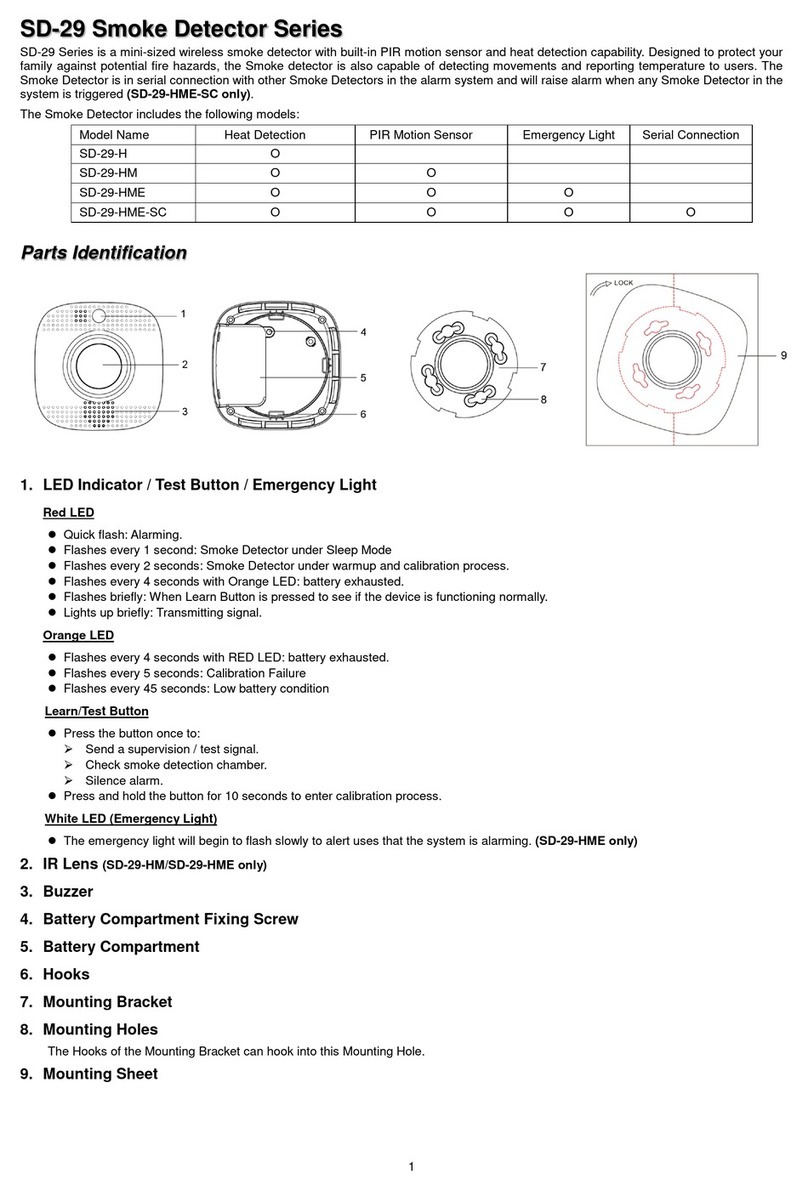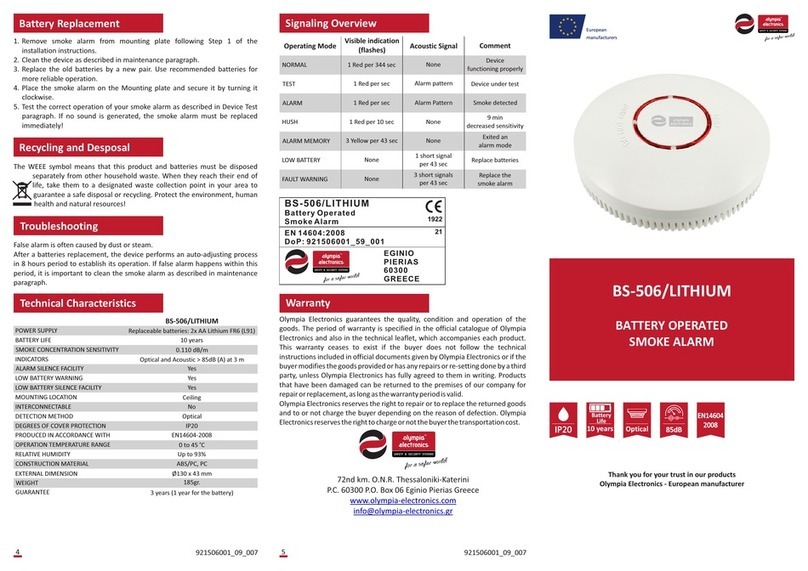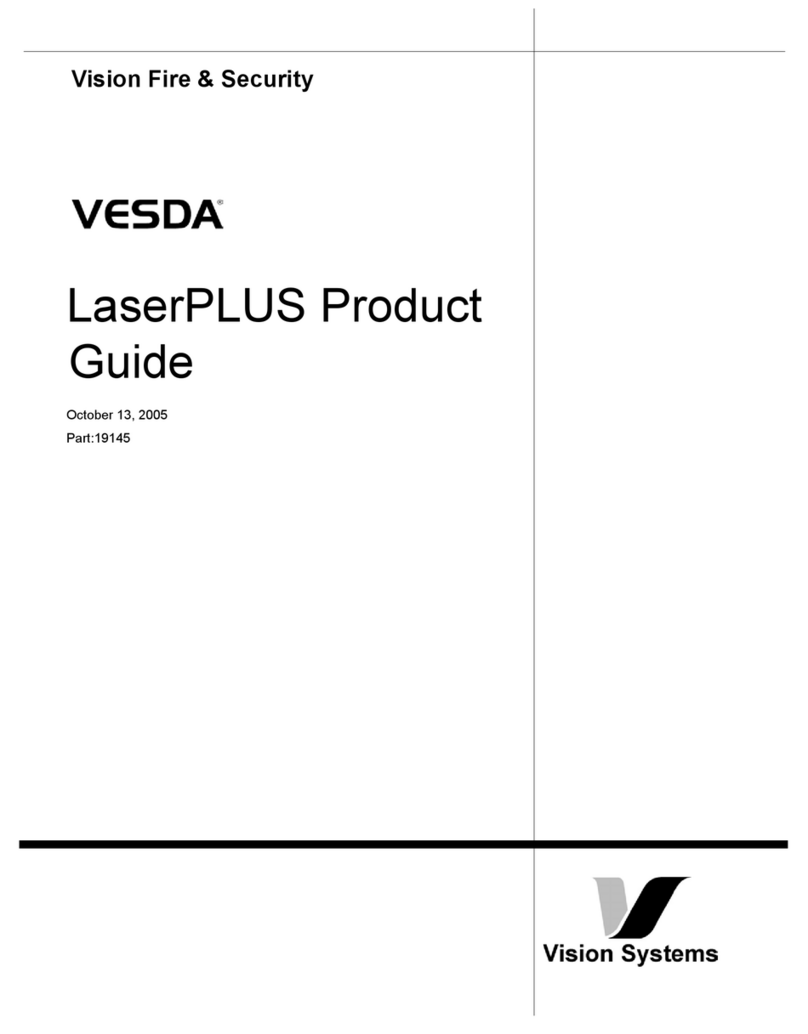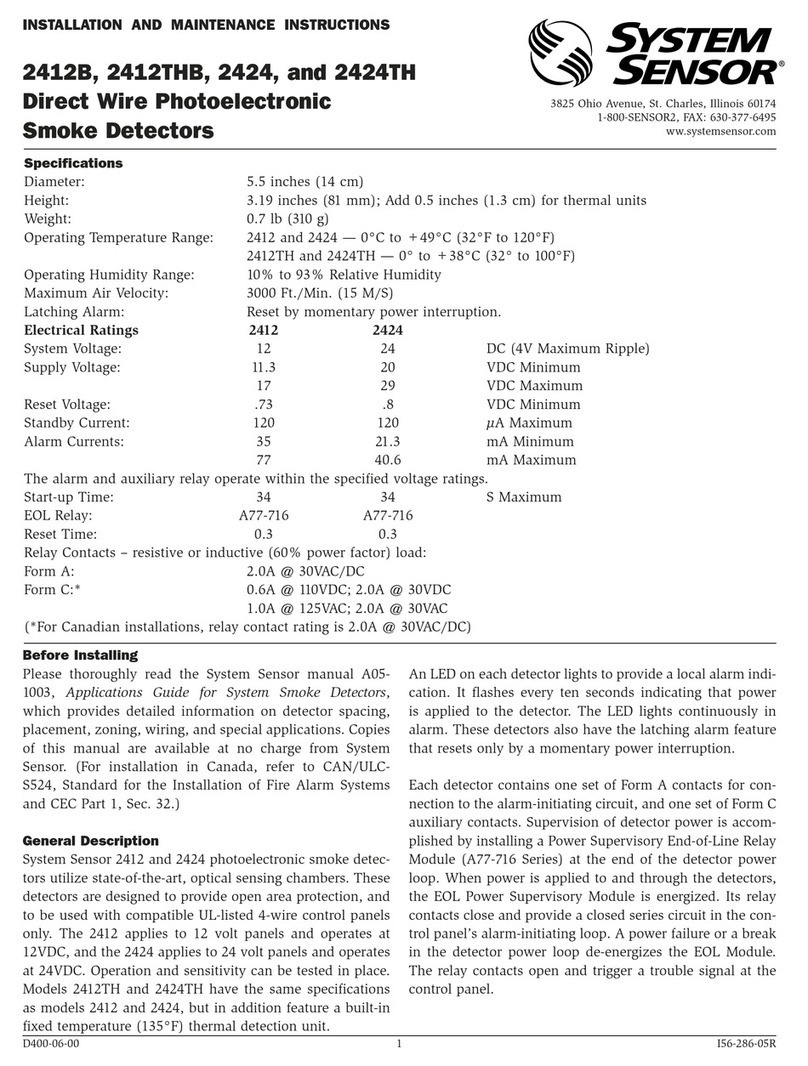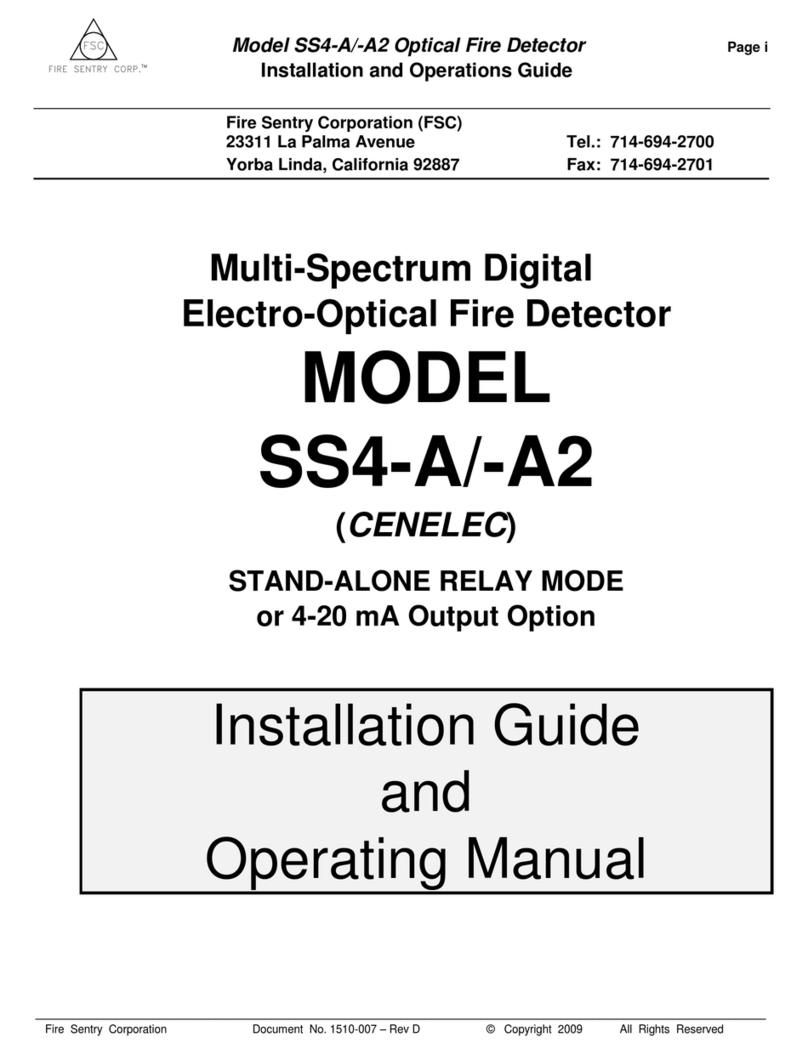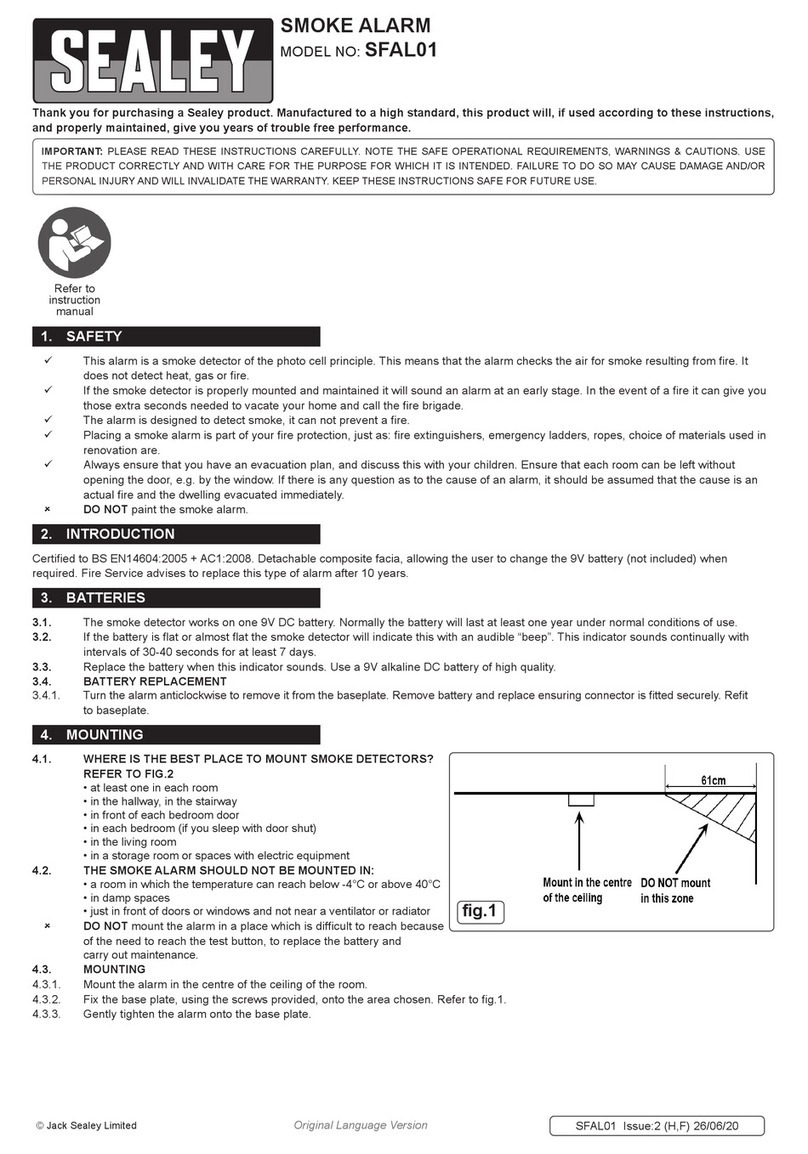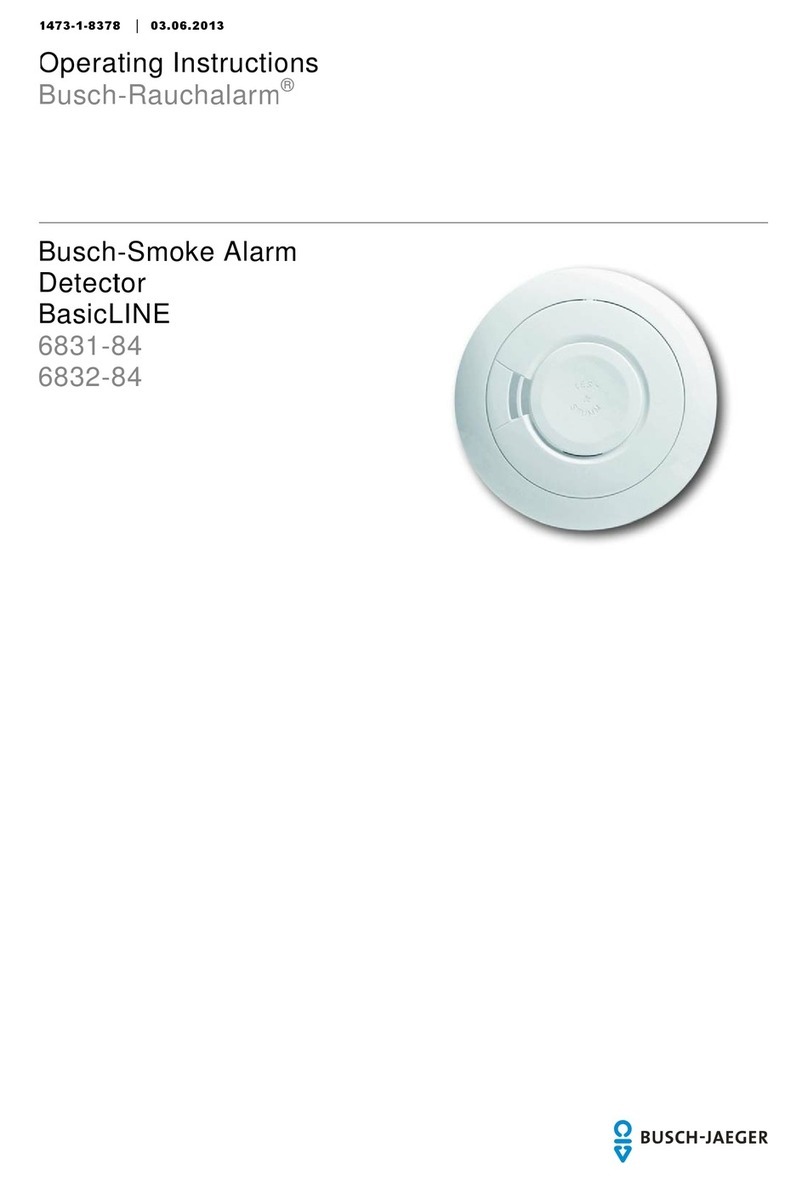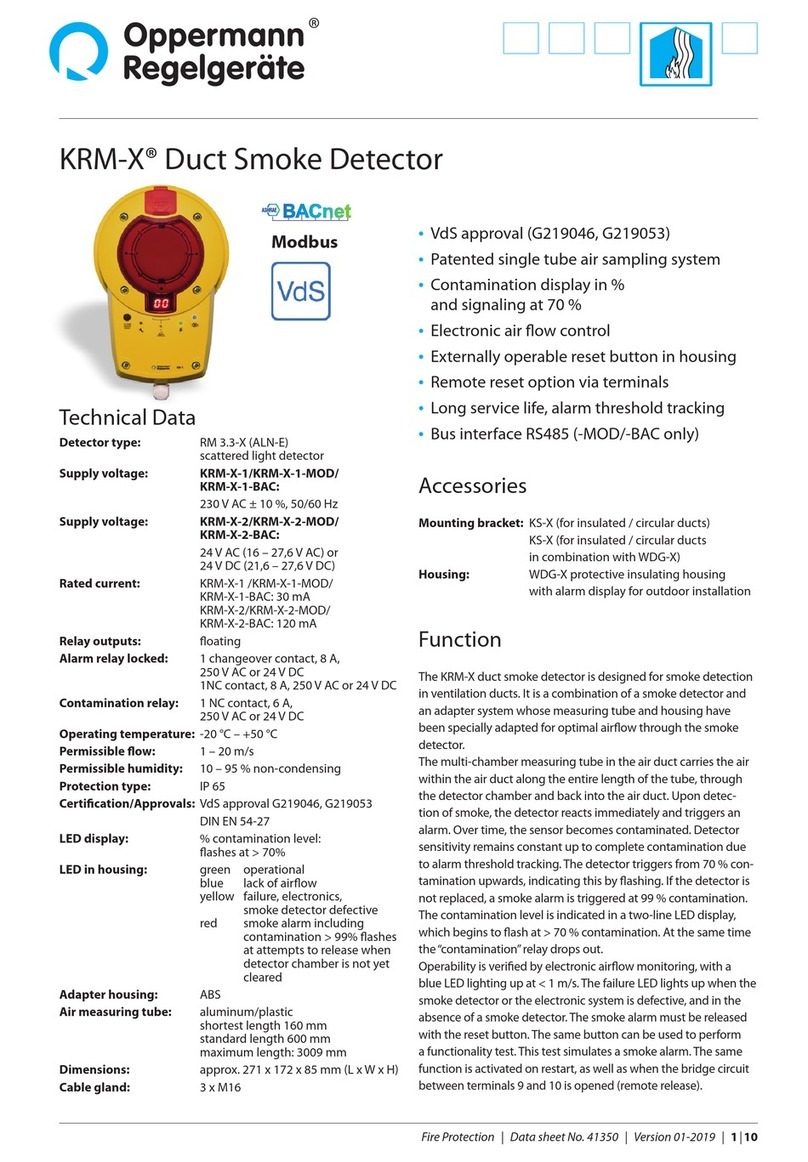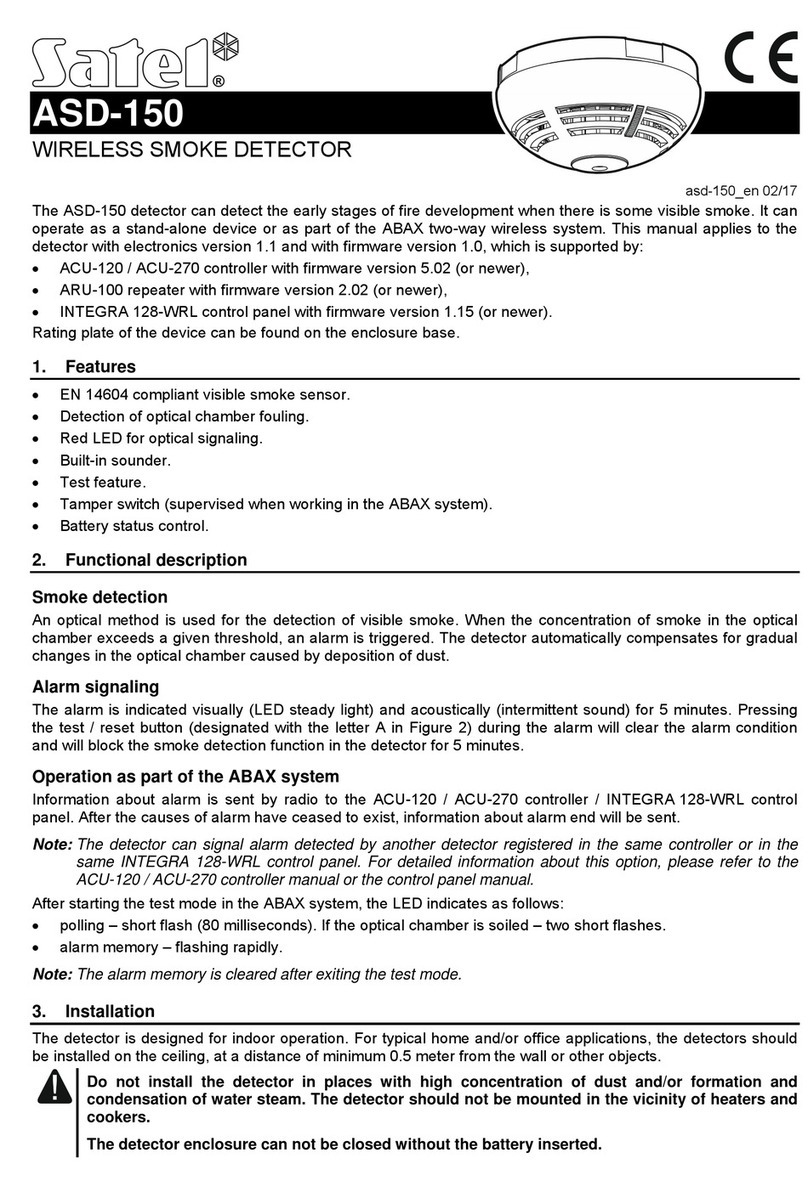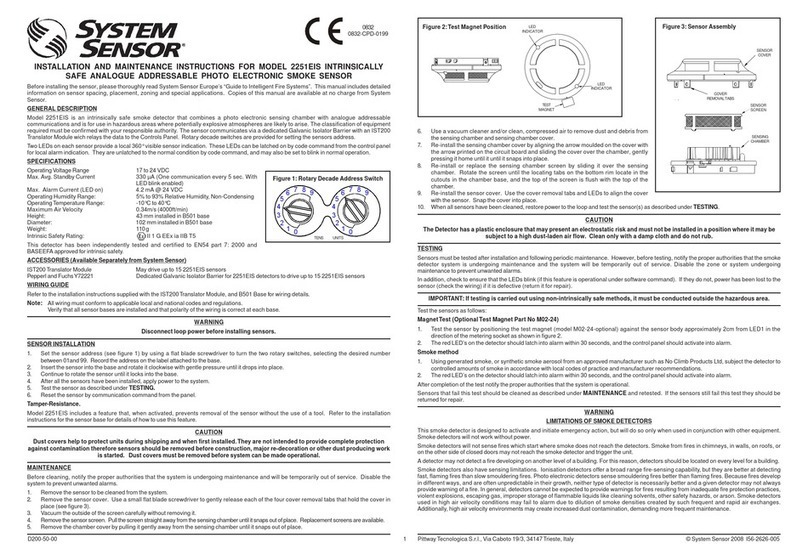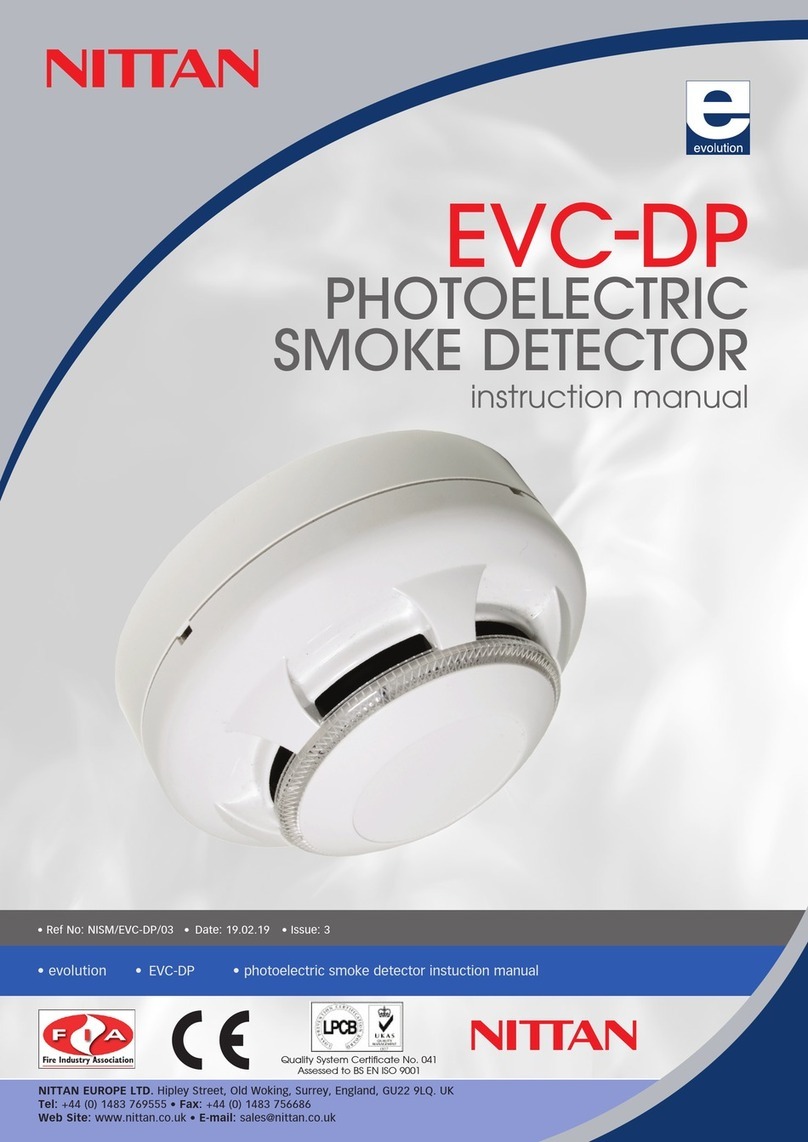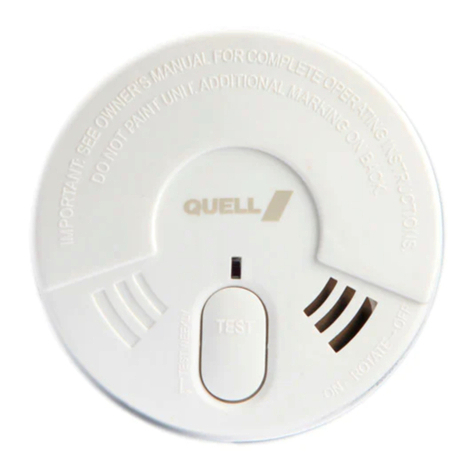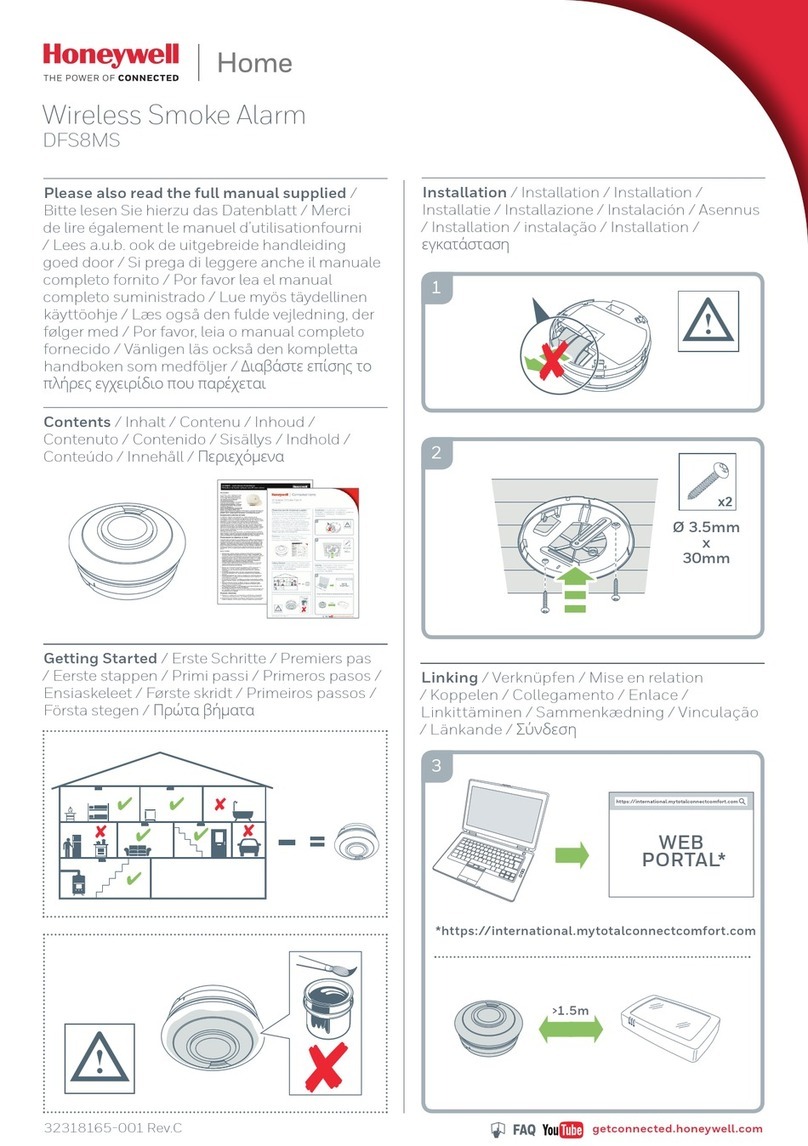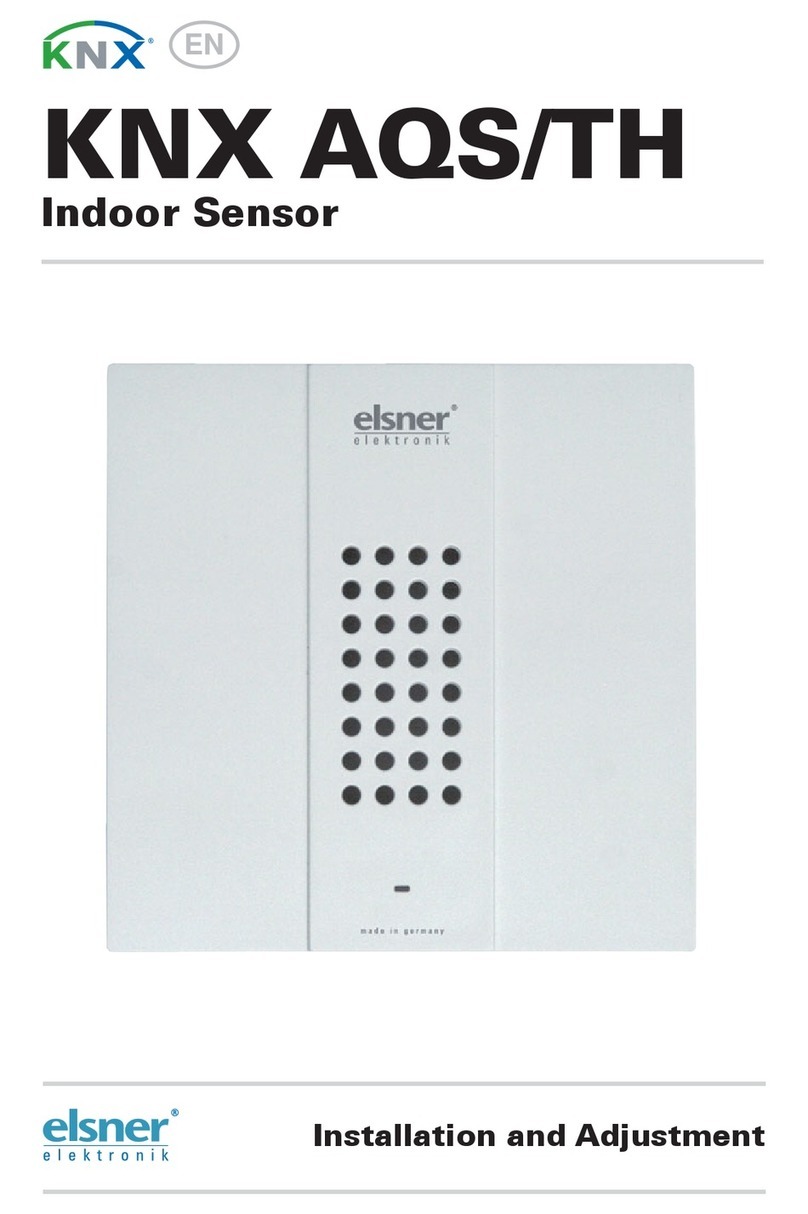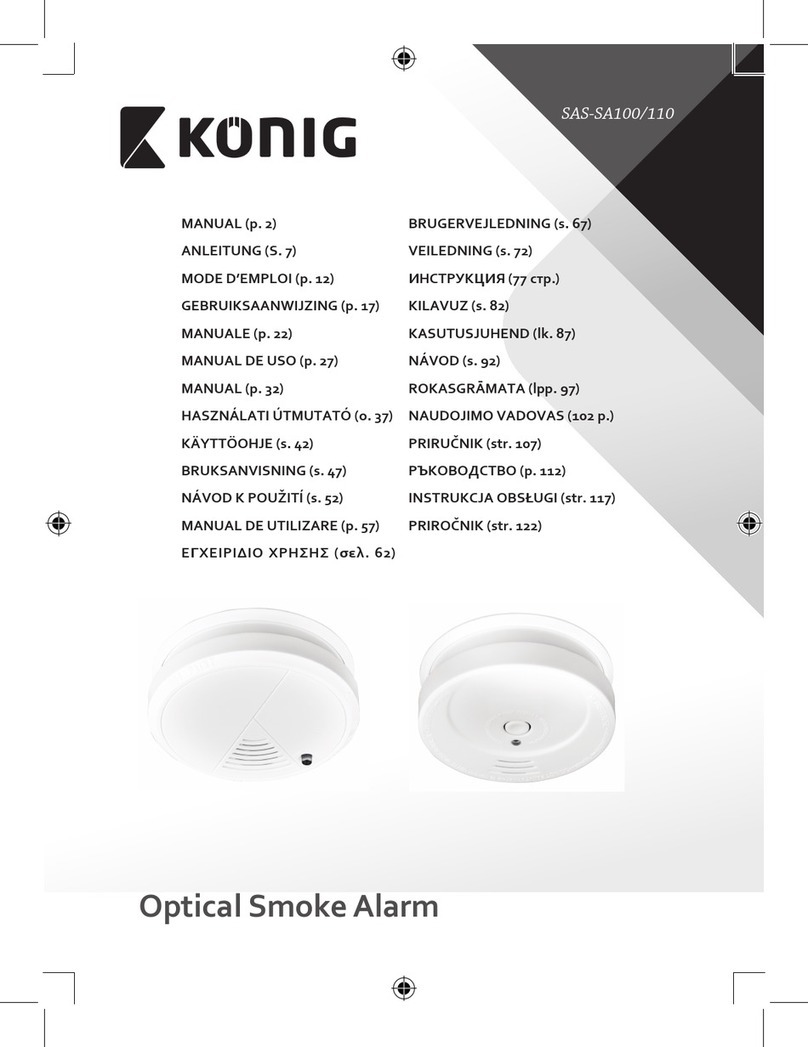
8
Temperature: 01 42 09 D1
If temperature signal 01 42 09 D1 is transmitted:
09D1 can be viewed as 0x09D1 in Hexadecimal number. You can convert hexadecimal to decimal and divide by 100 to check
the temperature data (in Celsius).
0x09D1=2513=25.13℃.
Humidity: 05 02 00 3B
If humidity signal 05 02 00 3B is transmitted:
003B can be viewed as 0x003B in Hexadecimal number. You can convert hexadecimal to decimal to check the humidity level
(in percentage).
003B=0x003B=59%
Smoke Alarm Test: [COMMAND_CLASS_NOTIFICATION] [NOTIFICATION_REPORT]
The user can press the button once to send smoke alarm test report to the Control Panel.
Smoke Alarm Test: 00 00 00 FF 01 03 00
01=alarm type; 03=smoke alarm test
Smoke Emergency/Smoke Emergency Cleared: [COMMAND_CLASS_NOTIFICATION] [NOTIFICATION_REPORT]
Smoke Alarm: 00 00 00 FF 01 02 00
Asmoke alarm will be activated after the smoke concentration exceeds the detection threshold, or either manually activated by
sending commands, the SDCO can be silenced and enter Alarm Silence mode. Please refer to “Alarm Silence”section for
details. The SDCO will send an alarm silence report in the following three conditions:
When the smoke concentration has dropped below alarm threshold, the SDCO will send: 00 00 00 FF 01 06 01 01
When the user presses the button to stop the alarm, the SDCO will send: 00 00 00 FF 01 06 01 02
When the user sends a siren off command to stop the alarm, the SDCO will send: 00 00 00 FF 01 06 01 03
Please refer to “Siren On/Off Control Command”for details.
Note: If multiple alarms are activated, the alarm silence events will be sent respectively.
After the SDCO is silenced, if no smoke is detected for 20 continuous detection times, the SDCO will transmit a restore signal:
00 00 00 FF 01 00 01 02.
Heat Emergency/Heat Emergency Cleared: [COMMAND_CLASS_NOTIFICATION] [NOTIFICATION_REPORT]
Heat Alarm: 00 00 00 FF 04 02 00
A heat alarm will be activated after the SDCO meets the Rate of Rise or High Heat condition, or either manually activated by
sending commands, the SDCO can be silenced and enter Alarm Silence mode. Please refer to “Alarm Silence”section for
details. The SDCO will send an alarm silence report in the following three conditions:
When the temperature has dropped below alarm threshold, the SDCO will send: 00 00 00 FF 04 09 01 01
When the user presses the button to stop the alarm, the SDCO will send: 00 00 00 FF 04 09 01 02
When the user sends a siren off command to stop the alarm, the SDCO will send: 00 00 00 FF 01 06 01 03
Please refer to “Siren On/Off Control Command”for details.
Note: If multiple alarms are activated, the alarm silence events will be sent respectively.
After the SDCO is silenced, if no high heat is detected for 16 continuous detection times, the SDCO will transmit a restore
signal: 00 00 00 FF 04 00 01 02
CO Emergency/CO Emergency Cleared: [COMMAND_CLASS_NOTIFICATION] [NOTIFICATION_REPORT]
CO Alarm: 00 00 00 FF 02 02 00
A CO alarm will be activated after the CO concentration exceeds the detection threshold, or either manually activated by
sending commands, the SDCO can be silenced and enter Alarm Silence mode. Please refer to “Alarm Silence”section for
details. The SDCO will send an alarm silence report in the following three conditions:
When the CO concentration has dropped below 30ppm, the SDCO will send: 00 00 00 FF 02 06 01 01
When the user presses the button to stop the alarm, the SDCO will send: 00 00 00 FF 02 06 01 02
Please note an alarm activated by exceeding the second alarm threshold CANNOT be silenced by pressing the
button.
When the user sends a siren off command to stop the alarm, the SDCO will send: 00 00 00 FF 01 06 01 03
Note: If multiple alarms are activated, the alarm silence events will be sent respectively.
After the SDCO is silenced, if CO drops below 30ppm for 10 continuous detection times, the SDCO will transmit a restore
signal: 00 00 00 FF 02 00 01 02
Tamper Open/Close report: [COMMAND_CLASS_NOTIFICATION] [NOTIFICATION_REPORT]
The SDCO is protected by a tamper switch which is compressed when the SDCO is hooked onto the mounting bracket. When
the SDCO is removed from the mounting bracket, the tamper switch will be activated and the SDCO will send a tamper open
signal to the system control panel to remind the user of this condition.
Tamper Open : 00 00 00 07 03 00
Tamper Close: 00 00 00 07 00 01 03








